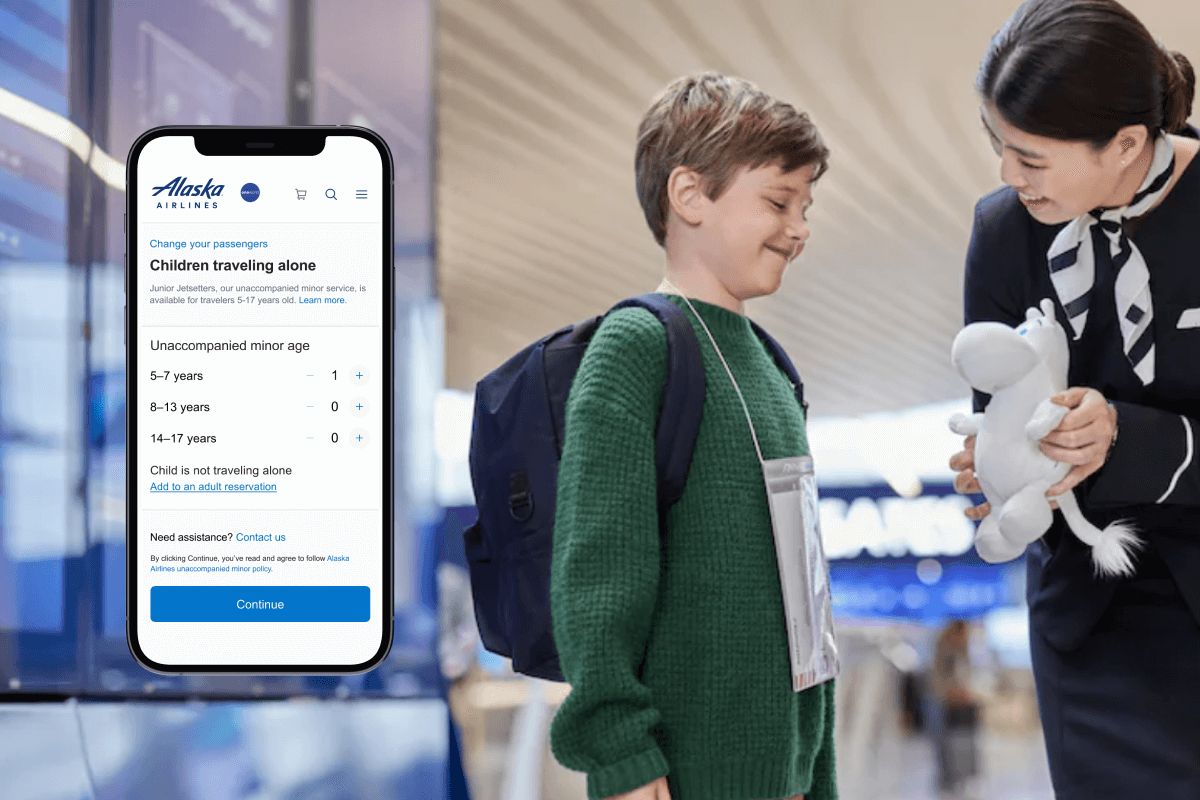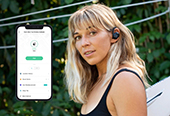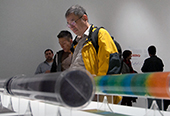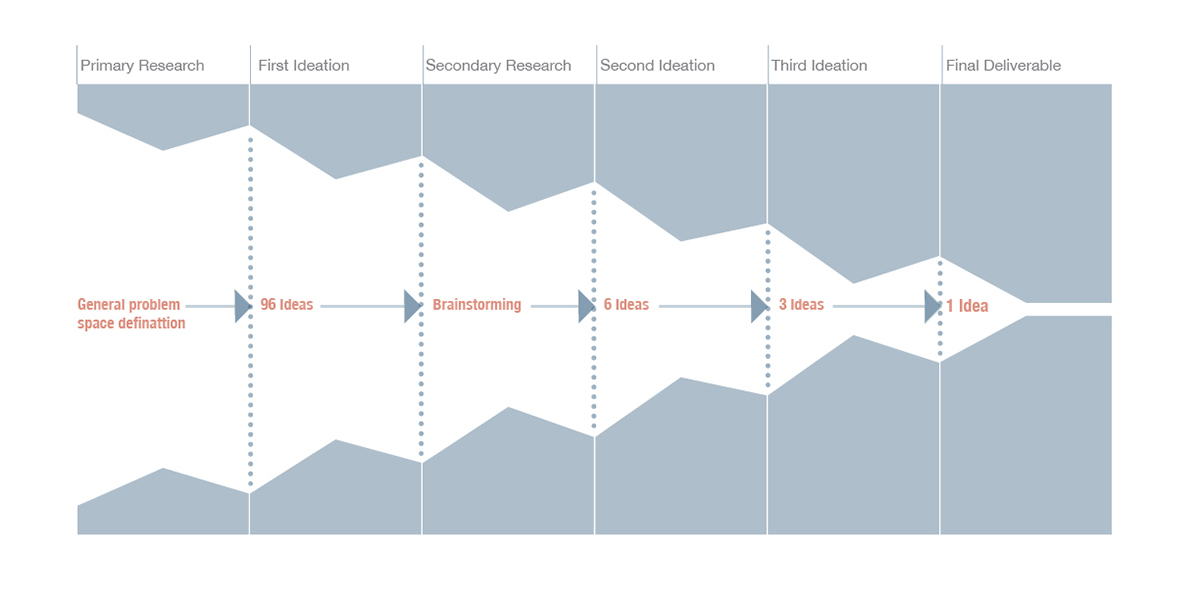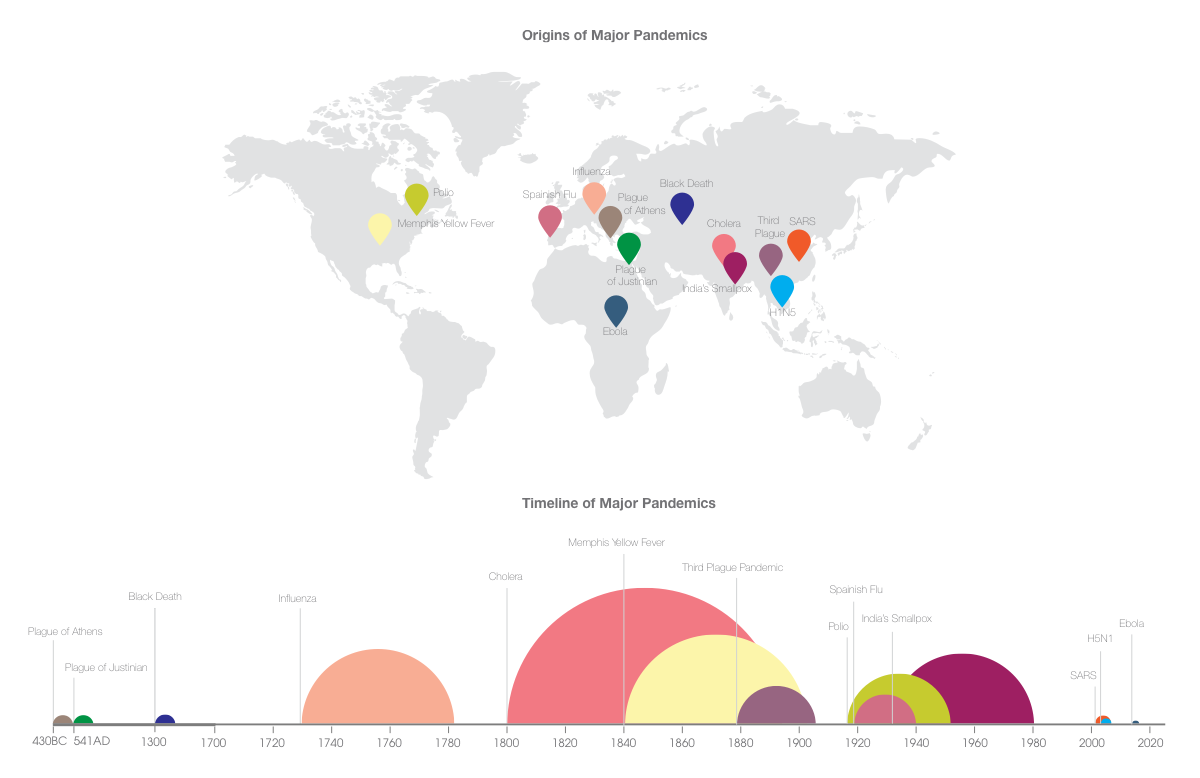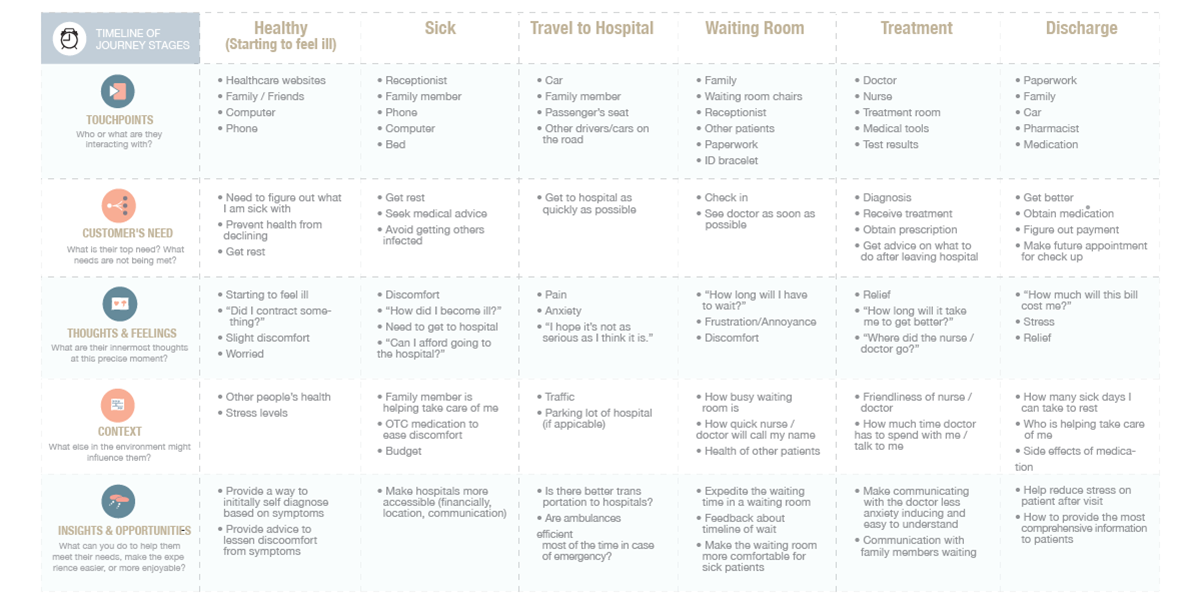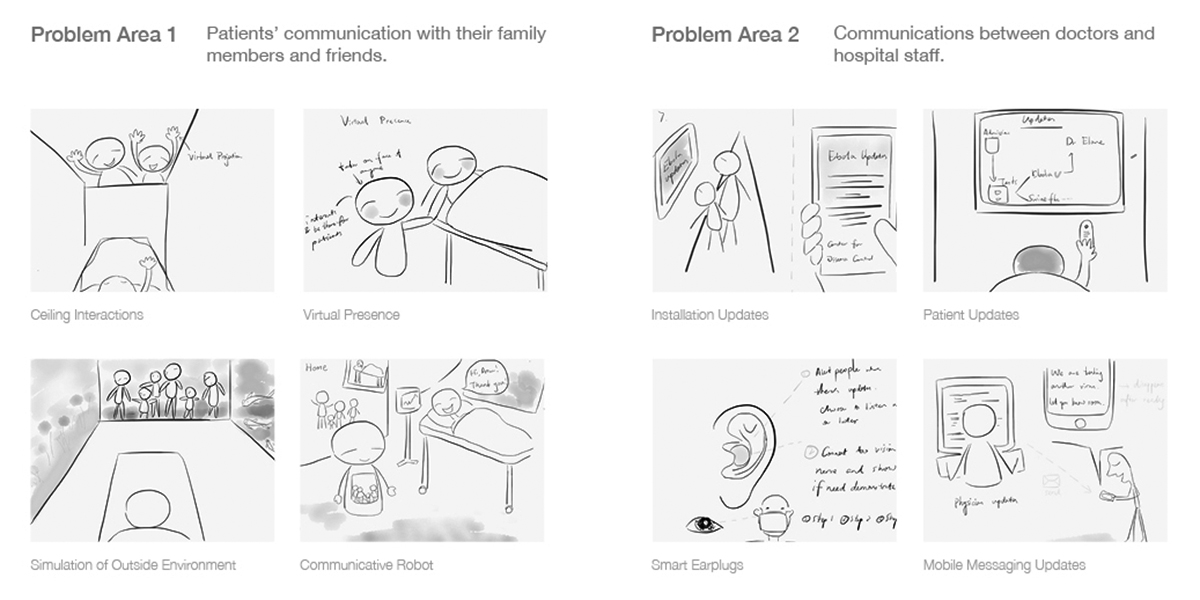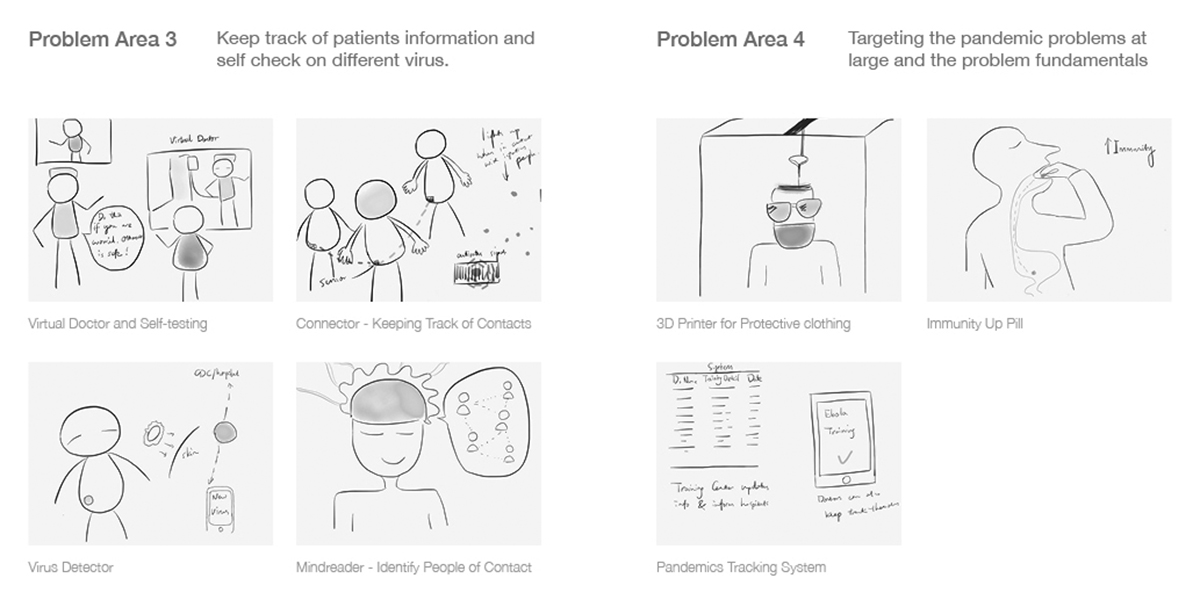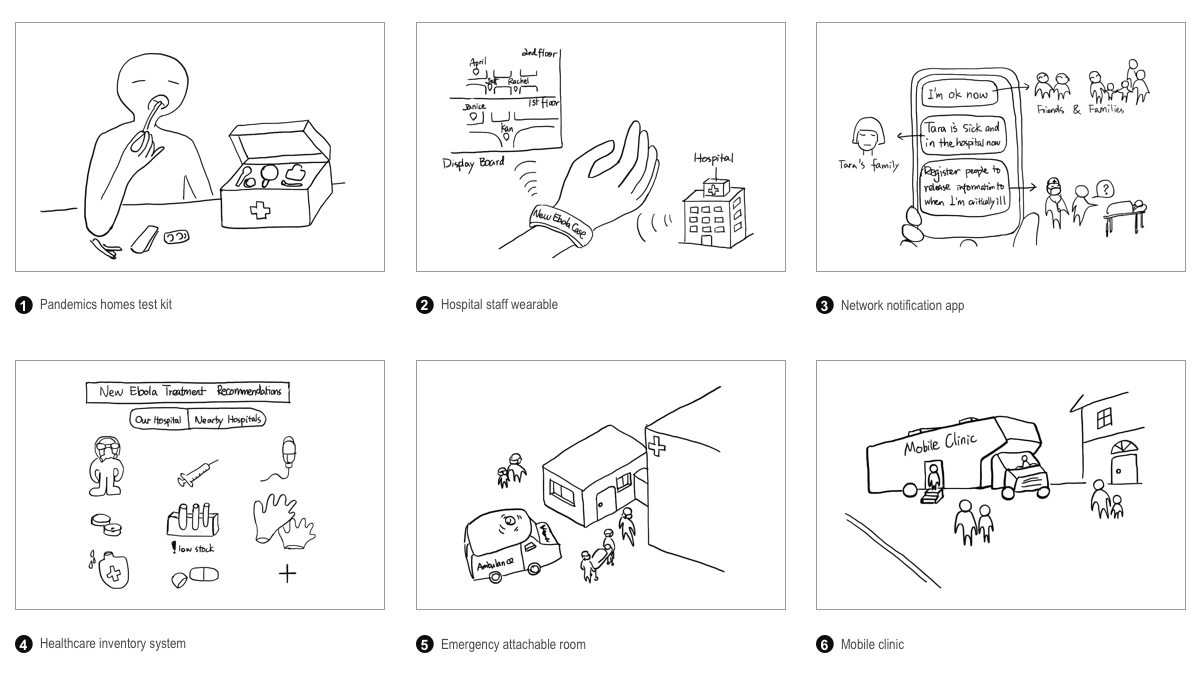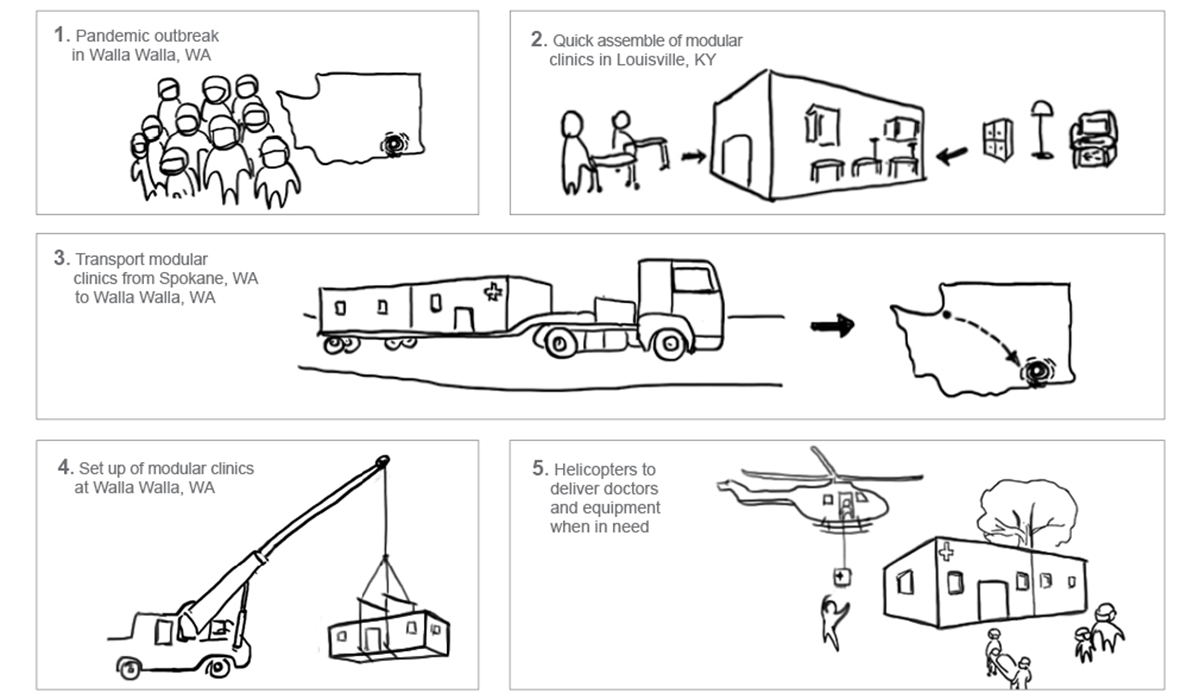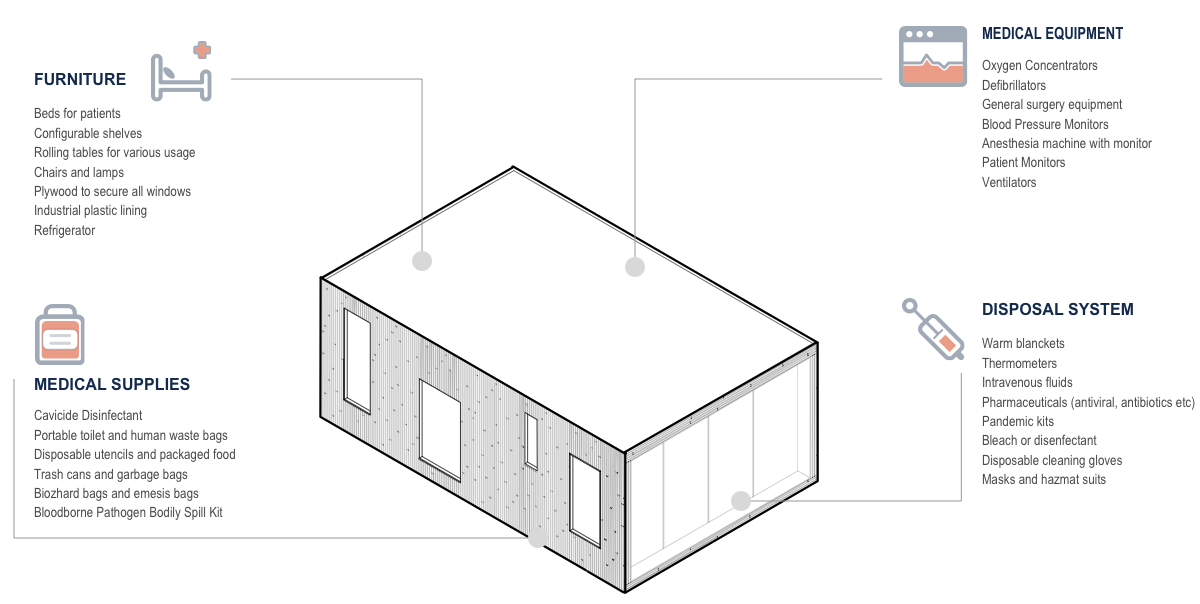Role
Initial research and ideation, user experience design
Team Members
with Kim Le, Hyun S Kim and Adam Riddle
PROBLEM STATEMENT
Pandemic is an epidemic of infectious disease that has spread through human populations across a large region. Due to its widespread nature, it has caused many casualties around the world. It is therefore a constant threat to human kind.
“It is the world’s first Ebola epidemic, and it’s spiraling out of control. There is still a window of opportunity to tamp it down, but that window is closing.” - Dr. Tom Frieden, Director of the CDC
OUR SOLUTION
Modular trailer-like construction used as a clinic or treatment room. It is easily constructed and deconstructed to allow for maximum flexibilty and also mobility.
PROCESS OVERVIEW
We went through funneling process with narrowing down concepts for this problem space. So we each generated around 15-16 ideas individually and then get together to generate 30 ideas as a group. Based on the 96 ideas we have, we narrowed them down to 6 ideas based on matrices and also problem area target. Then we expanded on the ideas more and then narrowed down to 3 ideas and finally to 1 idea. It was not easy. Lots of back ang forth and also lots of creating different criteria to measure these ideas.
RESEARCH
Since this is a new problem space for everyone in the group and a complicated one too, we focused on learning both the micro and macro aspects of pandemics. So we first mapped out the origins of the major pandemics in history and visualize the timeline and scale of these pandemics.
Then dived to understand more about contracting, seeking treatment and recovery process for an individual in a rural setting. Therefore we started with crafting a user journey map to understand the main painpoints to figure out what are the opportunities we could work on. A lot the problem area we have identified are really related poor implementation and integration of current technology and also practices in the medical field especially in more remote areas.
BRAINSTORMING
For this stage of the process, we focused on generating as many ideas as possible. The ideas are wild and also cover a wide range of problem areas. We worked individually as well as collaboratively to focus on 6 problem areas as highlighted by our subject matter expert Dr. Philips Green. Below are some samples of the ideas grouped according to their problem area space.
IDEATION ITERATION
After we generated the 96 ideas, the group get together to talk more about the ideas. We then identified six main areas to tackle surrounding the bigger problem of pandemics. We made sure that the 6 ideas are targeting very different issues and help solve the pandemic problem from different perspectives.
STORYBOARD
To map out the different problem area, we created storyboard for each idea to understand broadly and specifically how each idea fit into the problem space. The storyboard also helps to visualize what painpoints we are targeting specifically.
FINAL CONCEPT
In the event that a very contagious illness is present in a community, it is important to keep those who are ill quarantined to prevent the spread of the virus. With this in mind, we have finalized our concept to be the modular mobile clinic. These modular units can be relatively cheaply manufactured at central locations and then be transported to infected areas to be used separately from the main hospitals and also away from the healthy people. Having this mobile is convenient as if the pandemics spread quickly to another area, these units can act quickly and move to other infected areas as needed. Below is a demonstration of one unit and also the lists of standard necessary things that go into the unit. This allows for maximum efficiency when assembling and also flexibility for different pandemics.
